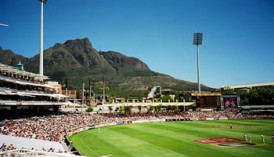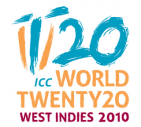The Most Competitive Era in Cricket History
Will Quinn |
South Africa is a unique place to watch test cricket. Grounds are never empty, but they’re rarely full as the majority of fans save themselves for limited-over games. Tickets are remarkably cheap, and the Western culture draws a lot of beer-drinking fans out for a day in the sun. In keeping with the country itself, the stadiums are stunningly beautiful with the Wanderers and Newlands amongst the greatest places for cricket in the world. Now, South Africa is also home to the world’s number one cricket team.
Their test side is built around dangerous fast bowlers who can strike at any time and a solid batting lineup that specialises in navigating difficult chases at the tail-end of a match. Bowlers charge in on green wickets, moving the ball through the air and off the seam to give visiting batsmen nightmares, backed up by some of the best fielders around. An array of strokeplayers try to dominate opposition attacks and take the game away from them, characterised by a stubborn refusal to give up no matter how unlikely a win may appear. South Africa are more than worthy of the world number one spot.
Yet they are not without their weaknesses. Their spin attack is forever underwhelming, and for whatever reason they struggle to win games at home consistently to the extent that so many great sides have. Two things that certainly could not be said of their closest challengers, India.
Test cricket in India could scarcely be more contrasting. A boiling hot climate bakes pitches and makes them slow, as well as ensuring that the new red ball rarely swings, making fast bowling somewhat ineffective at times. Their own quicks have mastered the art of getting the job done in such conditions though, with bowlers reversing the ball into batsmen’s pads late in the day. But the real strength of the Indian attack is in their spinners. Priding themselves on the ability to outthink a batsman, they toil all day in blinding heat, prising a way through opposition defences like thieves trying to pick a lock. Their captain marshals his troops brilliantly from behind the stumps, searching for weaknesses and playing with field settings.
Heavily partisan crowds come to massive stadiums to watch a batting lineup filled with legends of the game defy all comers on pitches that favour their strokeplay. Taking twenty wickets to win a game in India is all but impossible for visitors at times. Banners and signs decorate the stands, deifying their own players and demoralising the opposition. They may sometimes struggle on their travels, but many would say India is the toughest place to come and win a test series in the world.
One group who might disagree is the Sri Lankans, who were elevated to second place in the rankings recently having won every home series they’ve played for three and a half years. Somewhat milder in character than the Indian or South African sides, Sri Lanka’s strength is in their array of strange and unusual bowlers. Spinners with uncanny variations trick batsmen from both ends on wickets that often turn throughout the match, while medium-pacers test the patience of their opponents with movement through the air and off the pitch. Several classy batsmen have mastered batting at home, making winning a match in Sri Lanka a seriously tough ask.
Yet many believe their inability to win outside of their own country will prevent them from becoming the world’s undisputed best side- a title only recently surrendered by Australia, who may yet have a say in the matter. Australian cricket has all the feel of a crumbling empire, with a side composed largely of all-time greats gradually giving way to less talented successors. Australia still attracts the biggest crowds to test matches in the world, with huge concrete bowls packed with fans accustomed to seeing their side crush all comers with ease in glorious sunshine.
From the embers of a glorious side springs a highly professional outfit with a quality batting lineup and fast bowlers that can take sides apart on their day. While young and inexperienced, cricket fans all over the world have learned the hard way that the Australians should never be written off. Should the current crop of players mature into another generation of great cricketers, they could yet retain the crown only officially relinquished last month on a difficult trip to England.
The English are a strange case indeed, often appearing somewhat mediocre for large parts of a game before suddenly winning it in one hour of brilliance. Their strength is in swinging the ball through the air, something seen much more often in England than anywhere else in the test-playing world. On a gloomy London afternoon, their bowlers transform from ineffective trundlers into fearsome fast bowlers, swinging the ball past the bat and into the pads time and time again at serious pace. Their fans continue to get behind them despite years of frustration, and as the Aussies found out last month, it’s never an easy place to go. Their mercurial talents present a considerable challenge to any side hoping to make it to the top.
Australia’s demise has ushered in the most competitive era in cricketing history, with several countries jostling for position at the top of tree. The contrasting styles and abilities of each side adds spice to what is sure to be a fascinating period for the game. When one side finally emerges as the unchallenged best in the world, they will have well and truly earned it.





Using extremes like most, biggest, etc is some thing I don’t do in most cases. It is just an opinion though, so you are free to have yours.
This is certainly one of the most competitive eras with Australia, India, South Africa having good squads. I thought there were other periods where we had competitive cricket like this like during 1999. Then there were the strong eras where the squads were really great like Pakistan, West Indies and Australia all had great sides, and India was not doing too badly either in the shorter version.
Right now, New Zealand, Sri Lanka and England are below par even though they have won matches for themselves.
Comment by Pratters | 12:00am BST 27 September 2009
I agree that poor teams like Sri Lanka, Pakistan and New Zealand can also beat you in a test series but that was taken for granted in the 90s. Any team could defeat any other team except Australia when they started winning in the subcontinent as well.
1996-99 was also very competitive. Even Zimbabwe put their hands up.
Also, in 1999, it wasn’t Australia = no. 1 conclusive in ODIs. 1996-99, one can argue South Africa was the better team. I certainly would.
Comment by Pratters | 12:00am BST 27 September 2009
Okay. Sorry I skimmed through it. *blush*.
Then you have a fairly solid point and I fully agree with you. The Windies-Australia transition phase you mentioned was not as competitive and there are several eras more competitve than that. India, Sri Lanka and Zimbabwe were crap. Pakistan had talent but too much in-fighting. New Zealand and England weren’t that great. Australia and Windies were the only real class teams.
Comment by Pratters | 12:00am BST 27 September 2009
You can’t really say definitively, not least because “competitive” isn’t really defined. Australia were still obviously the best side in 1999, but the other era I was thinking of was in the early 90s when the West Indies began to decline and they, the Aussies and Pakistan were all very strong.
But I don’t think the competition to actually be the [I]best[/I] in the world has ever been this fierce. Sri Lanka are only slightly behind South Africa for the world number one ranking, while South Africa were recently stuffed at home to Australia. Who, in turn, have lost to England and India (who I believe actually have the strongest team) in the past year. It’s all very, very tight. If you use competitive to mean good-quality, there’s been plenty of better eras, but for a time when several teams are all extremely close together at the top of the tree you needn’t look any further than the present.
Comment by Will Quinn | 12:00am BST 27 September 2009
South Africa had an awful lot of quality at the time, but there were a lot of what you might call “CV gaps”. They never won in England, for example, losing 2-1 there in 1998. Nor did they beat Australia, losing home and away to them in 1997. South Africa never really delivered in spite of their incredible ability. There was a ruthless ability to grind out results in the Australian team that put them comfortably ahead of South Africa for me.
Comment by Will Quinn | 12:00am BST 27 September 2009
Enjoyable read, was only thinking the same thing myself earlier today. Does make for some fantastic cricket around the globe though which is only a good thing.
Comment by Marcuss | 12:00am BST 27 September 2009
The late-1980s and early-1990s was Pakistan’s best time as a Test team. It was also the height of India’s home invincibility (they didn’t win a single Test outside the subcontinent between 1986/87 and 2001).
Infighting has been a part of Pakistani cricket for, well, as long as I’ve ever heard (not sure it was absolutely prevalent in the 1960s, say). But it was almost as though, in the early-1990s, they simply had so much quality that they had to win plenty regardless.
In the first 2-3 years of the 1990s, the only team which could be said to be genuinely weak were the Sri Lankans. England and Australia had emerged from their worst-ever periods at the end of the 1980s, India were invincible at home, Pakistan were at their strongest ever, West Indies had been on the way down for a fair few years but such things are relative and they were still superb, and New Zealand were still strong at home if not away, and South Africa, when they were readmitted, had a superb, solid, all-round side ready-made.
Personally I place that and now just about atop the pile in the “most competetive times in Test history” stakes.
Comment by Richard | 12:00am BST 28 September 2009
Test cricket in a strange way at the moment, there is a lot to be excitied about I would tend to agree that it is the may well be the most competative it has ever been. But the question not asked is whether or not this is good or bad for cricket and sport in general? People tend to get frustrated when all time greats are at their peak but always miss them when they are gone, bomoaning a lack of quality of seen in past years and perhpas this era will be remebered as a good one that was lacking a key ingredient, a truly great side. None of the sides playing test cricket today will go down as great sides, they can be formidable at times but each has its own area of weakness. This is not necessarily a bad thing but when one looks back to the supposedly greatest era of any given sport it is ones in which one or preferably two or more great sides and players competed at the same time.
Then there are the serious problems of flat pitches, low attendance in various parts of the world and the demise of the West Indies that stop this being a classed a great era for test cricket I strongly hope and believe that test cricket will survive and continue to propser and that new great sides will emerge and from this era so that it will be be looked on as a the article concludes as a fascinating transitional period and not one in which the game started to decline.
Comment by Pothas | 12:00am BST 28 September 2009
But one thing i’m agreed with is that from now onwards there isn’t going to be any Dominating team
7 teams will be really close to each other
Comment by Naumaan | 12:00am BST 28 September 2009
I would say 96-99 was about as competitive but with a higher standard of cricket particularly when it comes to bowling. Now you sometimes get the feeling that you are watching tough contests between basically average teams.
Comment by Dissector | 12:00am BST 28 September 2009
I would say the first half of the 90s was even more competitive. Major teams except for England rarely lost at home and the WI were only nominally number one. There were a whole bunch of extremely tight series between top teams, such as Pakistan-WI in 90, Australia-WI in 92/93, Australia-Pakistan in 94, and SA-Australia in 93 and 94. All the bowlers were at their peaks except for Murali and McGrath.
In the second half Australia clearly were the number one team in the world after having beaten West Indies in their home turf in 95. They then beat the other challengers in SA in 97 and in Pakistan in 98. But they didnt dominate the way they did when Waugh took over and the other sides started to wane.
What a time for cricket the 90s were!
Comment by subshakerz | 12:00am BST 29 September 2009
second half of the 90s has been the most competitive era that i have witnessed with some very high quality cricket on display.
Comment by sanz | 12:00am BST 29 September 2009
England only lost 2 home series’ in 9 between 1990 and 1996, 1 of which was decided by one of the most unlikely partnerships in history (that being the Pakistan 1992 one).
Comment by Richard | 12:00am BST 29 September 2009
Fascinating piece, Will. You can define “competitive” a couple of ways – first, how many teams are close in relative strength, whether good or bad, and second, how many teams are good, i.e. above a certain standard. Some of you may remember I did a piece some time ago where I applied the ICC rankings back over time. If we look at the average of all the top teams, then this is certainly the most competitive ever in terms of how many strong teams there are (discounting Bangladesh and Zimbabwe earlier in the decade), although the average was in fact slightly higher last winter. In terms of the smallest spread between all teams, i.e. the smallest spread whether teams are strong or weak, since 1953 when Pakistan dwelled the ranks to seven that occurred in 1981, but this was due to the best teams being weakened by WSC defections. Discounting that period, then the smallest spread was in 1974, although the overall average was far lower than it is now.
Comment by Dave Wilson | 12:00am BST 30 September 2009
Dear cricket readers,
I am pleased as a fellow South Asian that two Indian players from the Subcontinent were named One Day cricketer and Test Match cricketer of year by the ICC.
Nevertheless, as I always mentioned India’s focus and interests should be on Test Match cricket with two bodies within the Indian Cricket Board working separately to foster or promote the two forms of the game. Otherwise, quality Test Match players, especially the up and coming players will suffer in regard to technique, application, concentration and mental application, which is required very much in Test Match cricket.
In One Day cricket it is about curtailing runs and swinging the willow and playing a great deal of unorthodox strokes. This is good for entertainment and getting patrons to view matches on a regular basis, but the longer version of the game that is the true from of the game and it should not be taken for granted at the expense of the shorter form of the game, which is problem at present. On the contrary, the ICC should curtail the shorter version of the game and promote the longer version of the game, with particular emphasis being put on enterprising and positive Test Match cricket.
Yours Faithfully,
M. R. Somasunderam.
Comment by Muralidaran Ramesh Somasunderam | 12:00am BST 1 October 2009